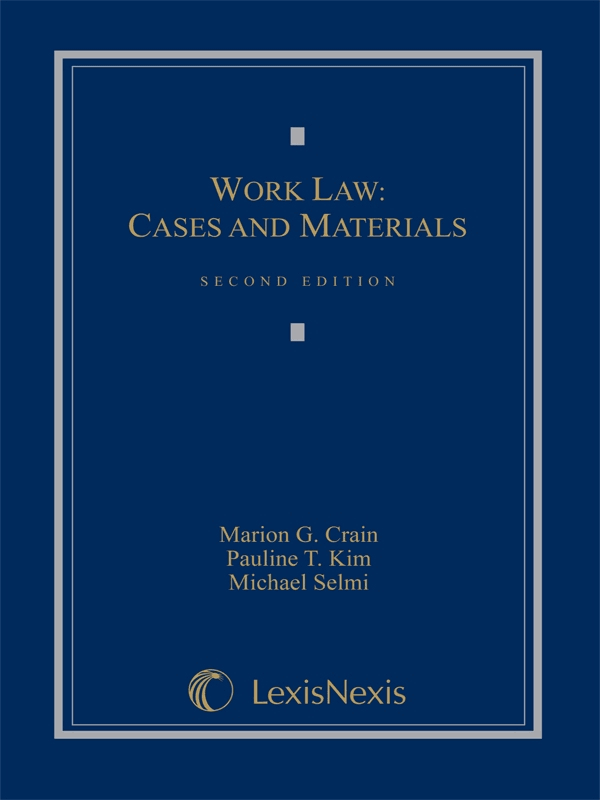Work Law: Cases and Materials eBook
$113.99 Original price was: $113.99.$67.68Current price is: $67.68.
By: Crain, Marion G.
Publisher: LexisNexis US
Print ISBN: 9781422490143, 1422490149
eText ISBN: 9780327176558, 0327176555
Edition: 2nd
Delivery: Can be download immediately after purchasing. For new customer, we need process for verification from 30 mins to 12 hours.
Version: PDF/EPUB. If you need EPUB and MOBI Version, please send contact us.
Compatible Devices: Can be read on any devices.
The law of work has evolved as a patchwork of legal interventions in the labor market, sometimes by statute, and sometimes through the common law of judicial decisions. Most law school curricula divide the law of work into three topical areas–Labor Law, Employment Law, and Employment Discrimination–and offer separate courses in each area. Labor law in the United States is understood to encompass the study of the National Labor Relations Act, the law governing union organizing and collective bargaining. It is the law of collective rights at work. Employment law refers to the statutes and common law governing individual rights at work. It ranges from minimum standards legislation to judicially created doctrines based in tort and contract law. Employment discrimination law deals with the statutes and interpretative case law advancing the antidiscrimination norm in the workplace. These statutes address the problem of status discrimination at work (e.g., discrimination on the basis of race, sex, national origin, ethnicity, religion, disability, or sexual orientation).
A comprehensive study of the law of work also provides an opportunity to assess critically what form enforcement of rights should take. Should conflicts between employers and employees be channeled into private resolution systems such as collective bargaining or contractual arbitration, or is the public interest sufficient to justify committing administrative, judicial and legislative resources to it? What is the significance of casting employee rights as collective–and therefore entrusting their enforcement to an employee representative such as a union–versus conceptualizing them as individual? Must such a collective representative be independent of the employer, or do employer-initiated employee committees further worker voice just as effectively? Doesn’t history also warn of the risks of subordinating individual interests to those of the collective, particularly in the context of a diverse workforce with minority groups characterized by race, ethnicity or gender?
Accordingly, the casebook is called ” Work Law” and it endeavors to present basic materials on each system of labor market regulation. The book identies core themes of conflict and concern in the workplace, canvass the governing law, and offer a vantage point for assessment. Several themes furnish the organizing structure for the book. The book asks how law should mediate the perennial conflict between employer and employee rights


Reviews
There are no reviews yet.